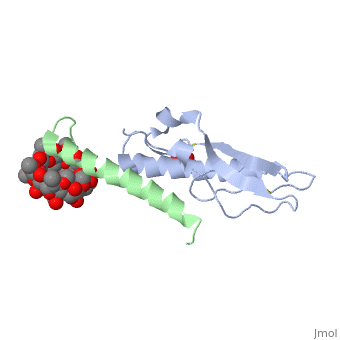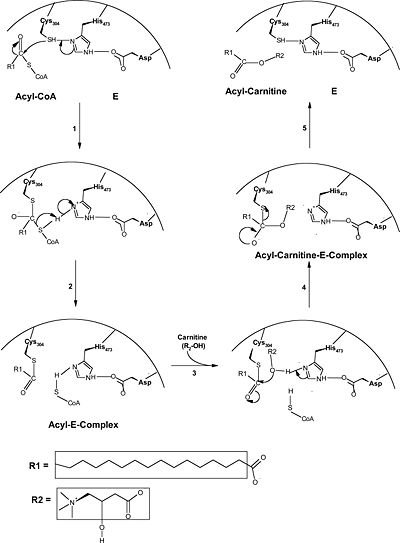Glucose-dependant insulinotropic polypeptide receptor</scene>' />
Glucose-dependent Insulinotropic Polypeptide Receptor
Background
Glucose-dependent insulinotropic polypeptide receptor (GIPR) is a transmembrane protein which is responsible for boosting glucose-induced insulin production. The transcription of this protein is positively controlled by glucose molecules, GIPR is expressed in higher levels when glucose is in higher concentration. The receptor is a multispan membrane bound protein (shown in blue) consisting of an alpha helix, half twist helices, and beta sheets binded in several locations with disulfide bonds within itself. The ligand which binds to GIPR is Glucose-dependent insulinotropic polypeptide (GIP) also known as Gastric inhibitory polypeptide(shown in green). GIP is an alpha helical endogenous polypeptide hormone which is released upon the ingestion of food, specifically the carbohydrate glucose.
Molecular Function
The purpose of the receptor is to bind Glucose-dependent insulinotropic polypeptide (GIP) in the presence of Glucose. This causes a chain reaction that increases secretion of insulin molecules. GIP binds to GIPR though and causes the release of G protein-coupled receptors which in turn causes an enzymatic cascade resulting in the increased secretion of insulin. This occurs in the pancreatic islet beta-cells. It is likely that the cause of type 2 diabetes is due to the inability of GIP to bind properly to GIPR.[1]
Ongoing Research
The significance of this receptor makes it a prime target for diabetes research.
2qkh
References
- ↑ Lynn FC, Pamir N, Ng EH, McIntosh CH, Kieffer TJ, Pederson RA. Defective glucose-dependent insulinotropic polypeptide receptor expression in diabetic fatty Zucker rats. Diabetes. 2001 May;50(5):1004-11. PMID:11334402


